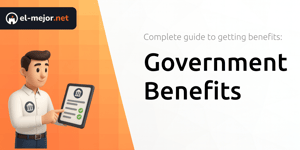In a world where shopping is just a click away, controlling our spending is more challenging than ever.
Impulse purchases can quietly erode your budget, leaving you feeling regret and financial strain. By understanding the forces that drive unplanned buying and adopting targeted techniques, you can regain control and
build healthier financial habits.
Understanding Impulse Spending
Impulse buying is remarkably common—89% of shoppers admit to making spontaneous purchases. In 2024, consumers averaged 9.75 impulse buys per month at around $28.90 each, amounting to $281.75 in unplanned spending every month.
Whether in a brick-and-mortar store (80% of impulse buys) or online (20%), the allure of a quick purchase can be hard to resist.
Psychological and Emotional Triggers
At its core, impulse spending is fueled by instant gratification. The rush of dopamine released when making a purchase creates a temporary high, often masking boredom, stress, or anxiety.
Scarcity tactics and social proof tap into FOMO—the fear of missing out—making us worry that a deal or item will vanish if we don’t act quickly. Busy lifestyles and cognitive overload add to the pressure, prompting automatic decisions instead of thoughtful choices.
Environmental and Marketing Influences
Retailers and advertisers use every tool at their disposal to encourage unplanned buying. In physical stores, eye-level displays and checkout temptations lure customers into last-minute purchases.
Online, one-click checkout, targeted ads, flash sales, and social commerce on platforms like TikTok and Facebook make it easy to buy with minimal friction. Combined, these tactics create an environment where resisting impulse buys requires deliberate effort.
Practical Strategies to Curb Impulse Purchases
Stemming the tide of impulse spending is possible with clear, actionable steps. Implementing these habits can transform your financial outlook and help you save for what truly matters.
- Reflect before Purchasing: Pause and ask if the item is a need or simply a fleeting desire.
- Use a Shopping List: Prepare a precise list for each shopping trip or online order, and stick to it.
- Adopt the 24-Hour Rule: Wait at least a day before deciding on non-essential items to let the initial urge fade.
- Organize Your Budget: Track spending in an app or spreadsheet to spot patterns and adjust behaviors.
- Avoid Temptation Zones: Skip aisles or websites that trigger splurges, and unsubscribe from promotional emails.
Alternative Coping Techniques
Recognizing when emotions drive your spending is crucial. When stress or boredom strikes, turn to healthy outlets instead of shopping.
- Practice mindful breathing or meditation to reduce anxiety.
- Keep a journal to explore underlying feelings before reaching for your wallet.
- Go for a walk or exercise to boost mood without spending money.
- Call or meet a friend for social support instead of scrolling through shopping apps.
- Engage in hobbies—reading, painting, or cooking—to channel your energy positively.
Building Lasting Financial Habits
Breaking impulse spending patterns doesn’t happen overnight. Commit to gradual changes:
Start by budgeting with intentional categories for savings and discretionary spending. Celebrate small victories—every dollar saved from an unplanned purchase adds up over time.
Share your goals with a friend or family member to create accountability. Over time, these consistent behaviors will become second nature, freeing you from the grip of impulsive urges and strengthening your financial resilience.
Conclusion
Impulse spending traps thrive in environments designed to exploit our emotions and cognitive biases. By increasing self-awareness, using proven tactics like the 24-hour rule, and replacing shopping with healthy coping mechanisms, you can protect your budget and achieve financial peace of mind.
Ultimately, the power lies in intentional choices. Each time you pause, reflect, and decide with purpose, you reclaim control over your finances and build a future aligned with your long-term goals.
References
- https://capitaloneshopping.com/research/impulse-buying-statistics/
- https://www.invespcro.com/blog/impulse-buying/
- https://www.pymnts.com/consumer-insights/2025/walking-the-pocketbook-tightrope-how-consumers-are-balancing-uncertainty-and-spending/
- https://explodingtopics.com/blog/gen-z-spending
- https://fitsmallbusiness.com/impulse-buying-statistics/
- https://ikanabusinessreview.com/2024/11/the-secret-psychology-behind-impulse-buying/
- https://www.bankrate.com/banking/savings/ways-to-avoid-impulse-buying/
- https://thedaily.case.edu/why-is-impulse-spending-so-tempting-cwru-economics-professor-sining-wang-weighs-in/










